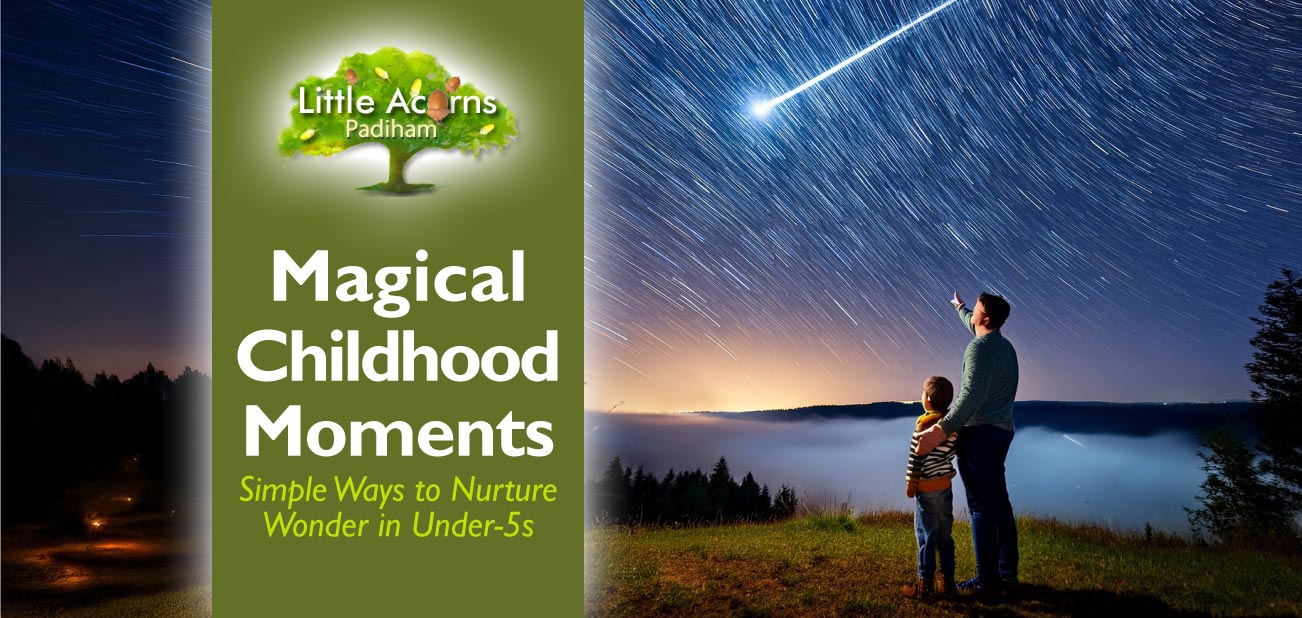
 Childhood is full of magic — not just the kind found in fairy tales, but also the quiet, everyday kind that’s instinctively fed by a child’s curiosity. Little ones have an innate sense of wonder; the world is vast, mysterious, and full of possibility. Whether they’ve discovered a camouflaged moth on a tree trunk, a rainbow stretching across the sky, or the miraculous shape of a fresh snowflake, each can feel like an amazing discovery to a young child. And they really are amazing!
Childhood is full of magic — not just the kind found in fairy tales, but also the quiet, everyday kind that’s instinctively fed by a child’s curiosity. Little ones have an innate sense of wonder; the world is vast, mysterious, and full of possibility. Whether they’ve discovered a camouflaged moth on a tree trunk, a rainbow stretching across the sky, or the miraculous shape of a fresh snowflake, each can feel like an amazing discovery to a young child. And they really are amazing!
As parents and caregivers, we have the privilege of seeing that magic unfold to our children. We also have the power to nurture it. Sometimes such moments appear in the most unexpected of places, while at other times, they grow from shared adventures that have taken a little more planning. All such experiences can become treasured memories that a child can carry with them for years — and we can help.
See the World Through Their Eyes
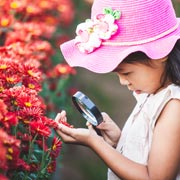 Young children experience the world differently to adults. They notice details we’ve long since stopped paying attention to — the way water ripples in a puddle, a cloud that may be shaped like an animal, or the captivating sparkle of a ‘special’ rock as it glints in the sun. To little ones, these are truly magical. What’s more, they’re all around us but, with our busy lives, go unnoticed so often by adults.
Young children experience the world differently to adults. They notice details we’ve long since stopped paying attention to — the way water ripples in a puddle, a cloud that may be shaped like an animal, or the captivating sparkle of a ‘special’ rock as it glints in the sun. To little ones, these are truly magical. What’s more, they’re all around us but, with our busy lives, go unnoticed so often by adults.
However, such wonders are to be celebrated! Taking time to see things from a child’s perspective helps you reconnect with that sense of awe. As well as reinforcing how magical the world is to little ones, it also reminds you what you may have forgotten about the amazing planet we inhabit. So, next time you’re walking or exploring outdoors with your child, try slowing down and letting your child lead the way. You might find yourself stopping every few steps to inspect something special that you’d have otherwise passed by. To young children, such exploration and discovery is a truly magical part of childhood. What’s more, reconnecting with such moments can open adults’ eyes to forgotten wonders too.
Even ordinary outings can become big adventures when seen through a child’s eyes. For young children, a trip to a new park, feeding some particularly fancy ducks, or watching an unusually spectacular sunset can seem every bit as magical as a faraway journey.
Nature’s Magic in Everyday Moments
 The natural world offers endless opportunities for children to experience wonder. It’s a place where all the senses come alive. Take time with your child, therefore, to enjoy such opportunities — the feel and beauty of soft moss, the smell of fresh rain in the air, the sound of leaves crunching underfoot, and a million other such possibilities.
The natural world offers endless opportunities for children to experience wonder. It’s a place where all the senses come alive. Take time with your child, therefore, to enjoy such opportunities — the feel and beauty of soft moss, the smell of fresh rain in the air, the sound of leaves crunching underfoot, and a million other such possibilities.
Everyday nature moments can be as simple as collecting interesting leaves, following the flight of a butterfly, or taking time to listen to birds singing in a forest. These small discoveries encourage curiosity, teach children about the universe, and help them feel more connected to the world they live in. Follow the bold, green links to download free reference sheets for such activities.
Childhood Magic in Bigger Adventures
Sometimes, though, it’s worth going a little further to proactively create an experience that feels truly special to you and your child.
 Starry nights lend us a good example. On a warm summer night, perhaps wrap up in blankets, grab a hot chocolate, and sit outside together to watch the stars. See if your child can spot a satellite on its quiet journey, or a shooting star racing across the night sky. Discuss what it might be like up there in space. Ponder whether there are other creatures on faraway planets looking back at us — perhaps a tiny speck of light to them, just as they are to us. We don’t have all the answers to such big questions, but that’s OK — it demonstrates the enormity and complexity of life and the universe — and can only increase the child’s sense of wonder.
Starry nights lend us a good example. On a warm summer night, perhaps wrap up in blankets, grab a hot chocolate, and sit outside together to watch the stars. See if your child can spot a satellite on its quiet journey, or a shooting star racing across the night sky. Discuss what it might be like up there in space. Ponder whether there are other creatures on faraway planets looking back at us — perhaps a tiny speck of light to them, just as they are to us. We don’t have all the answers to such big questions, but that’s OK — it demonstrates the enormity and complexity of life and the universe — and can only increase the child’s sense of wonder.
A sunset watch is another good example. Find a high spot or hilltop together and take a half hour or so to watch the colours of the sunset sky together. Notice the luminous clouds and beams of light shift and change as the sun makes its way down towards the horizon (avoid looking directly at the sun, of course). Discuss how the day is drawing to a close as the sun dips down and disappears — only to reappear come morning as we travel together on this planetary merry-go-round.

A family adventure or expedition is another great way to give focus to some magical childhood moments. First, build some excitement by announcing the plan for an expedition or ramble in advance. Perhaps it’ll be along a local trail, scenic path, river route, or in an interesting new park. Be sure to call it an “adventure.” Take a picnic, stop to watch horses, feed ducks on a river, or visit a cosy café or tearoom along the way. On such a trip, there is an incredible array of opportunities for memorable and magical moments to mesmerise your child. Whether it’s a spectacular butterfly, a caterpillar that your child has never seen before, an amazing wildflower meadow buzzing with chirping crickets, or an exciting view or discovery around a corner, there is so much to excite and fascinate a young child!
It’s important to know that these little adventures don’t need to be elaborate or costly, though — it’s the sense of discovery, and the feeling of doing something special together, that makes them unforgettable — and wonderful learning moments too.
Cherish Everyday Wonder & Emotional Connections Through Shared Moments
 Magical memories often come not just from what we do with our children, but how we do it. Giving a child and their special discoveries your full attention, feeding back, pondering questions, and marvelling together, all make such moments more special and memorable. The real magic lies in connection — in being fully present with your child, sharing laughter, the sense of wonder, and the warmth of togetherness. The most meaningful memories from childhood need not come from big events or expensive outings — they often come from simple moments that make a child feel curious, loved, and seen.
Magical memories often come not just from what we do with our children, but how we do it. Giving a child and their special discoveries your full attention, feeding back, pondering questions, and marvelling together, all make such moments more special and memorable. The real magic lies in connection — in being fully present with your child, sharing laughter, the sense of wonder, and the warmth of togetherness. The most meaningful memories from childhood need not come from big events or expensive outings — they often come from simple moments that make a child feel curious, loved, and seen.
So, next time your little one spots something wonderful — an interesting feather, dewdrops caught on a web, a sunbeam coming through the clouds — take a moment to pause with them. Those few seconds of shared wonder might just become one of their most magical memories, or rightfully fill them with awe at our incredible world.
Little Acorns: a High-Quality Childcare Nursery in Padiham
A Weekday Childcare Service for Children Under 5
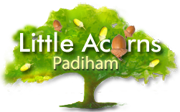
 If you are looking for a good childcare nursery in Padiham for your baby or child under five, consider Little Acorns Nursery. We provide a wonderful home-from-home environment for children under our care, nurturing their learning and development proactively to bring out the very best in them. In this way, they become as school-ready as possible by the time they are old enough to begin school. As well as serving Padiham families, we may also suit those nearby in Burnley, Hapton, Rose Grove, Altham, Huncoat, Read, Simonstone, Sabden, Higham, and Wood End. We are rated as a ‘Good Provider’ by Ofsted and support free childcare funding for eligible families.
If you are looking for a good childcare nursery in Padiham for your baby or child under five, consider Little Acorns Nursery. We provide a wonderful home-from-home environment for children under our care, nurturing their learning and development proactively to bring out the very best in them. In this way, they become as school-ready as possible by the time they are old enough to begin school. As well as serving Padiham families, we may also suit those nearby in Burnley, Hapton, Rose Grove, Altham, Huncoat, Read, Simonstone, Sabden, Higham, and Wood End. We are rated as a ‘Good Provider’ by Ofsted and support free childcare funding for eligible families.
Click one of the buttons below to begin your child’s application, to ask questions, or to arrange a free tour of this fabulous Padiham nursery.

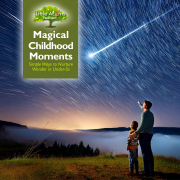
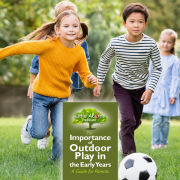
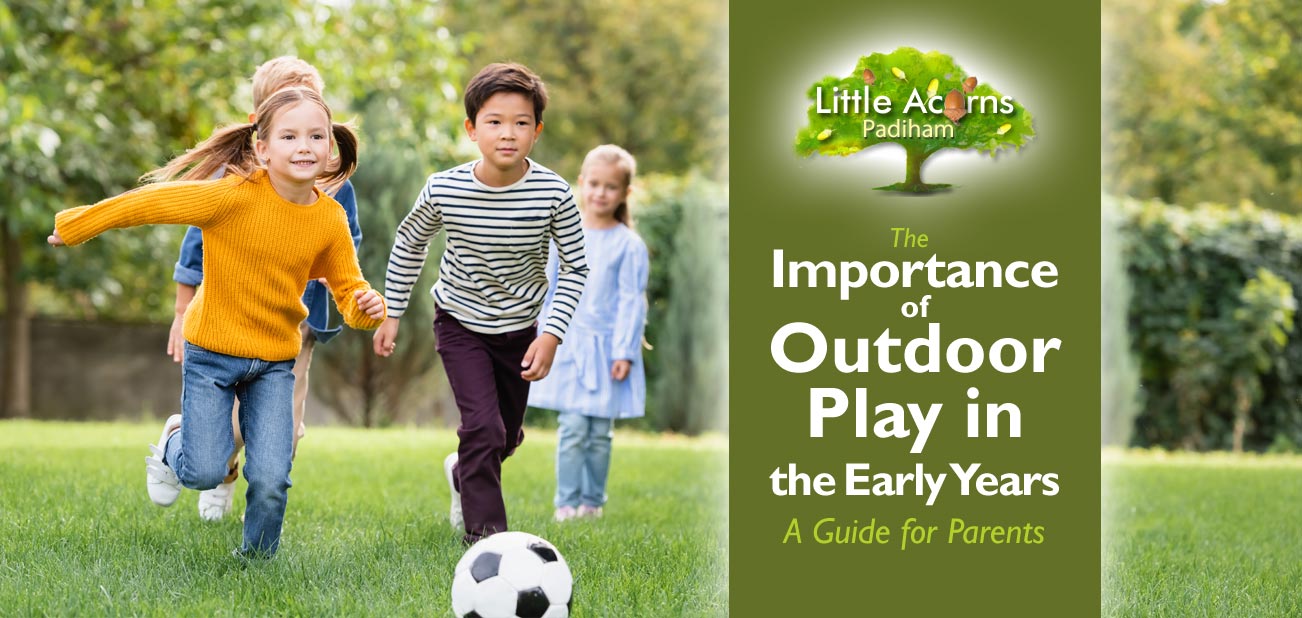
 There’s something truly magical about childhood spent outdoors — the feel of grass under little feet, the thrill of climbing onto a rustic log for the first time, the delight in spotting a ladybird on a leaf, or precious time spent playing with friends. However, in today’s busy, screen-filled world, many children spend far less time outside than previous generations. For children in their early years — toddlers and preschoolers — this simple joy isn’t just fun; it is essential for learning, growth, and wellbeing. Today’s guide explores why outdoor play is so important and offers practical ideas for making it part of everyday life.
There’s something truly magical about childhood spent outdoors — the feel of grass under little feet, the thrill of climbing onto a rustic log for the first time, the delight in spotting a ladybird on a leaf, or precious time spent playing with friends. However, in today’s busy, screen-filled world, many children spend far less time outside than previous generations. For children in their early years — toddlers and preschoolers — this simple joy isn’t just fun; it is essential for learning, growth, and wellbeing. Today’s guide explores why outdoor play is so important and offers practical ideas for making it part of everyday life. Being outdoors provides more than just fresh air — it encourages movement, sparks curiosity, inspires confidence, and helps children develop in a myriad of ways. Whether they are running across a playground, climbing a tree, or watching an insect on a leaf, children are learning about the world around them and practising skills that will serve them for years to come. Outdoor play is not an optional extra; it is a vital part of healthy early childhood development.
Being outdoors provides more than just fresh air — it encourages movement, sparks curiosity, inspires confidence, and helps children develop in a myriad of ways. Whether they are running across a playground, climbing a tree, or watching an insect on a leaf, children are learning about the world around them and practising skills that will serve them for years to come. Outdoor play is not an optional extra; it is a vital part of healthy early childhood development. Young children need to build fitness, strength, coordination, and balance, and outdoor play is perfect for this. Running across open spaces, jumping over puddles, or navigating uneven ground all support fitness, muscular development, and bone health. Even small movements like digging in the garden or balancing on playground equipment help children grow stronger, hone balance and coordination, and become more agile.
Young children need to build fitness, strength, coordination, and balance, and outdoor play is perfect for this. Running across open spaces, jumping over puddles, or navigating uneven ground all support fitness, muscular development, and bone health. Even small movements like digging in the garden or balancing on playground equipment help children grow stronger, hone balance and coordination, and become more agile. Playing outside with other children is huge fun! It also teaches important social skills, such as sharing, taking turns, and cooperating. It also nurtures emotional resilience — learning to manage disappointment when a game doesn’t go their way, or the thrill of conquering a slightly scary obstacle, helps build confidence. Outdoor play also offers children a sense of freedom and independence, which is crucial for developing self-esteem.
Playing outside with other children is huge fun! It also teaches important social skills, such as sharing, taking turns, and cooperating. It also nurtures emotional resilience — learning to manage disappointment when a game doesn’t go their way, or the thrill of conquering a slightly scary obstacle, helps build confidence. Outdoor play also offers children a sense of freedom and independence, which is crucial for developing self-esteem. Some parents may worry that they need large gardens or special equipment to provide meaningful outdoor play, but this isn’t the case. The simplest activities can often be the most rewarding. Jumping in or over puddles, drawing with chalk on the pavement, building things with sticks, or
Some parents may worry that they need large gardens or special equipment to provide meaningful outdoor play, but this isn’t the case. The simplest activities can often be the most rewarding. Jumping in or over puddles, drawing with chalk on the pavement, building things with sticks, or 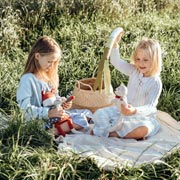 Outdoor play offers unique possibilities throughout the year. In spring, puddles, mud, and budding flowers provide endless opportunities for
Outdoor play offers unique possibilities throughout the year. In spring, puddles, mud, and budding flowers provide endless opportunities for 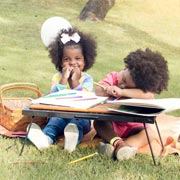 The best way to reap the benefits of outdoor play is to make it a regular part of your child’s routine. Even brief, daily sessions of outdoor activity have lasting benefits. Walks to the park, nursery, or school, time spent exploring a garden, or creating simple outdoor rituals like
The best way to reap the benefits of outdoor play is to make it a regular part of your child’s routine. Even brief, daily sessions of outdoor activity have lasting benefits. Walks to the park, nursery, or school, time spent exploring a garden, or creating simple outdoor rituals like 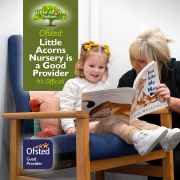
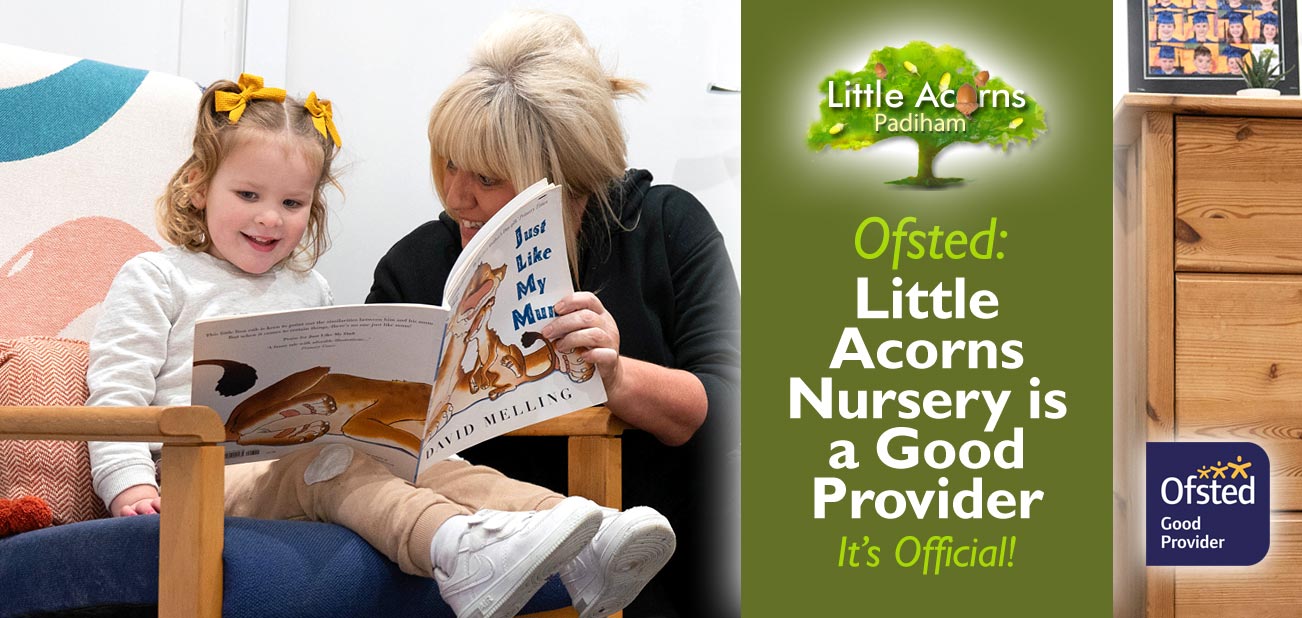
 We’re delighted to announce that Ofsted has published a stunning report for Little Acorns Nursery, Padiham. It’s now official that this excellent Padiham childcare setting is a ‘Good Provider’ — in every category! What’s more, the Ofsted inspector published some wonderfully positive comments about the nursery, staff, and quality of care as part of the report. Their findings are a testament to the high quality of the setting, the professionalism of its early years practitioners and leadership, and the positive impact the nursery has on babies and children in its care. Today, we take a deep dive into the details.
We’re delighted to announce that Ofsted has published a stunning report for Little Acorns Nursery, Padiham. It’s now official that this excellent Padiham childcare setting is a ‘Good Provider’ — in every category! What’s more, the Ofsted inspector published some wonderfully positive comments about the nursery, staff, and quality of care as part of the report. Their findings are a testament to the high quality of the setting, the professionalism of its early years practitioners and leadership, and the positive impact the nursery has on babies and children in its care. Today, we take a deep dive into the details.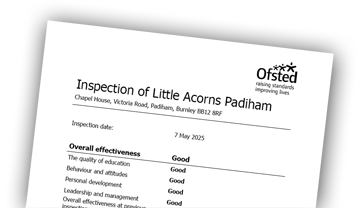

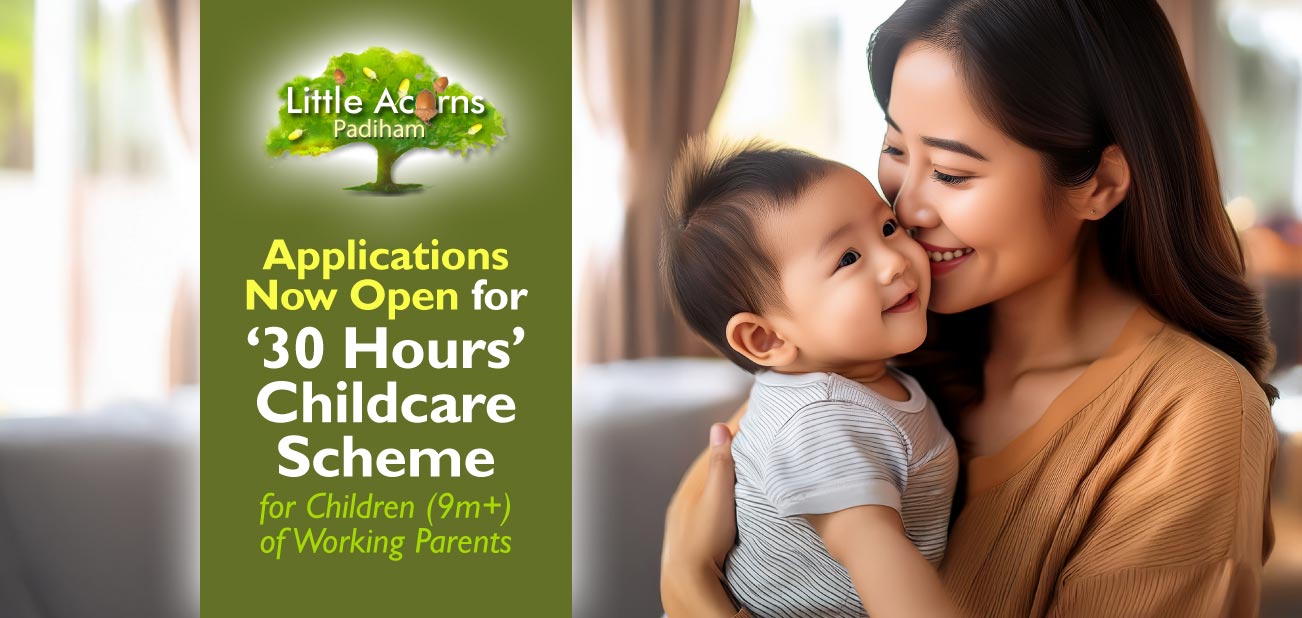
 Attention working families: applications are now open for eligible children, aged from only 9 months, to receive 1140 hours of free childcare per year from September 2025. What’s noteworthy is that this will be the first time such young infants and toddlers can access so many free hours. It effectively doubles the number of free childcare hours previously available to those under 2 via the scheme. The new, extended funding is for eligible working families, who now have until the 31st of August to apply if they would like their child(ren) to start in the September 2025 term.
Attention working families: applications are now open for eligible children, aged from only 9 months, to receive 1140 hours of free childcare per year from September 2025. What’s noteworthy is that this will be the first time such young infants and toddlers can access so many free hours. It effectively doubles the number of free childcare hours previously available to those under 2 via the scheme. The new, extended funding is for eligible working families, who now have until the 31st of August to apply if they would like their child(ren) to start in the September 2025 term. This newly extended scheme will be profoundly beneficial to parents, children, the business world, and the economy. Let’s take a look:
This newly extended scheme will be profoundly beneficial to parents, children, the business world, and the economy. Let’s take a look: The funded childcare is for children of working parents with earnings within the specific range outlined below. Under this scheme, children receiving the free hours from the September 2025 term must be aged no less than 9 months old on 1st September 2025 and free funding for those who remain eligible is available right up until school age.
The funded childcare is for children of working parents with earnings within the specific range outlined below. Under this scheme, children receiving the free hours from the September 2025 term must be aged no less than 9 months old on 1st September 2025 and free funding for those who remain eligible is available right up until school age. As our families regularly confirm, Little Acorns in Padiham is a highly-regarded childcare nursery that attracts
As our families regularly confirm, Little Acorns in Padiham is a highly-regarded childcare nursery that attracts 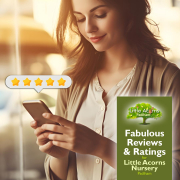


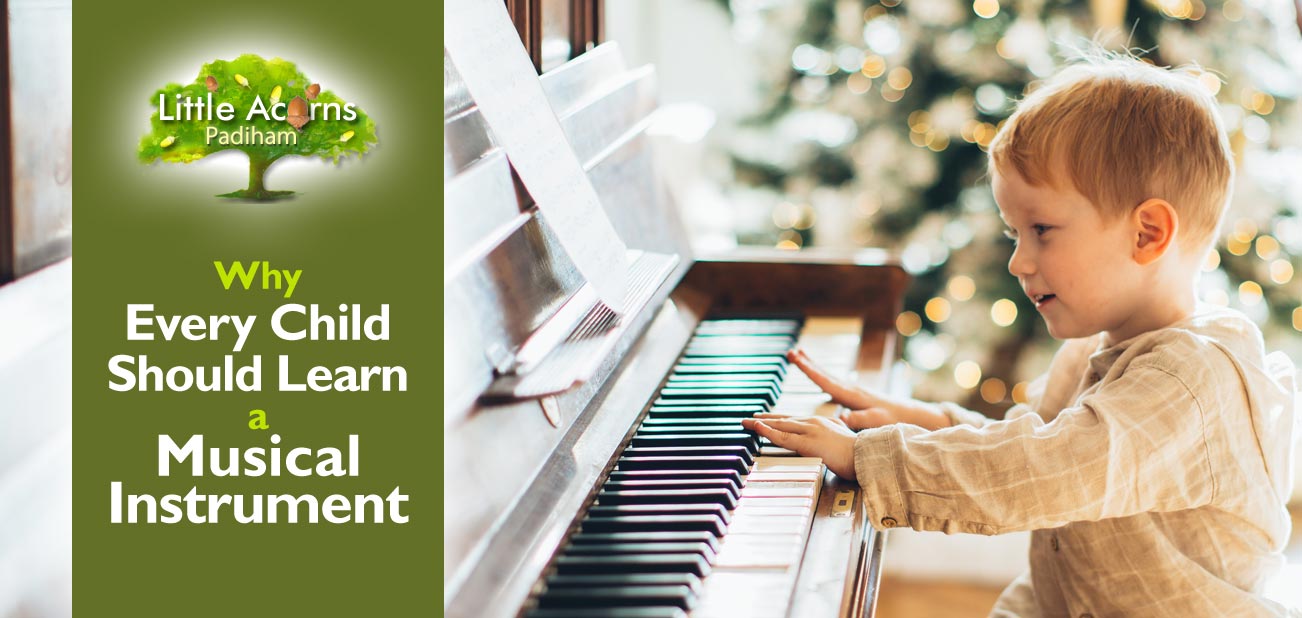
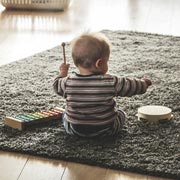 Even the youngest children seem to have an affinity towards playing a musical instrument. Put any child in front of a piano, guitar, or drum, or hand them a tambourine or shaker and they’ll immediately engage in generating sound and rhythm. It seems to be instinctive and children find music-making almost compelling — and great fun to boot. What’s more, children seem naturally keen to become better at playing instruments and, in time, to be able to play a recognisable tune. With that being the case, it’s often very easy to encourage them to take lessons, whether formally or informally, often leading to a lifelong vocational skill. What many parents may not know, however, is just how beneficial learning to play musical instruments is to little ones. Indeed, learning to play benefits them in often profound ways and that’s what we take a look at in today’s post.
Even the youngest children seem to have an affinity towards playing a musical instrument. Put any child in front of a piano, guitar, or drum, or hand them a tambourine or shaker and they’ll immediately engage in generating sound and rhythm. It seems to be instinctive and children find music-making almost compelling — and great fun to boot. What’s more, children seem naturally keen to become better at playing instruments and, in time, to be able to play a recognisable tune. With that being the case, it’s often very easy to encourage them to take lessons, whether formally or informally, often leading to a lifelong vocational skill. What many parents may not know, however, is just how beneficial learning to play musical instruments is to little ones. Indeed, learning to play benefits them in often profound ways and that’s what we take a look at in today’s post. When children play a musical instrument, learning to read music is a natural progression. Although it is communicated using different symbols, reading music is akin to reading words in a book. There is a flow from one side of the page to the other, every detail needs to be taken into consideration, and the left side of the brain is doing the work. Indeed, the left side of the brain controls reasoning and processes language. Whether reading music or words, each mark means something and communicates something to the reader. As such, children who learn to read music and do so regularly may find that it also helps them to read words in books.
When children play a musical instrument, learning to read music is a natural progression. Although it is communicated using different symbols, reading music is akin to reading words in a book. There is a flow from one side of the page to the other, every detail needs to be taken into consideration, and the left side of the brain is doing the work. Indeed, the left side of the brain controls reasoning and processes language. Whether reading music or words, each mark means something and communicates something to the reader. As such, children who learn to read music and do so regularly may find that it also helps them to read words in books. Learning to play a musical instrument and read music requires thought, deep concentration, and analysis. All such activity is great exercise for a child’s developing brain. It gets synapses firing, helps in the development of new connections, and truly enhances cognitive development. It’s rather like a multi-gym for the brain!
Learning to play a musical instrument and read music requires thought, deep concentration, and analysis. All such activity is great exercise for a child’s developing brain. It gets synapses firing, helps in the development of new connections, and truly enhances cognitive development. It’s rather like a multi-gym for the brain! When children learn to play a musical instrument, collaboration is a natural next step. Whether joining a band, writing songs as part of a team, or playing in the school orchestra, such collaboration is a fabulous way for children to make new friends and acquaintances. Through making music, their friendship circles will naturally grow and that’s a wonderful benefit.
When children learn to play a musical instrument, collaboration is a natural next step. Whether joining a band, writing songs as part of a team, or playing in the school orchestra, such collaboration is a fabulous way for children to make new friends and acquaintances. Through making music, their friendship circles will naturally grow and that’s a wonderful benefit. Music is almost magical in its ability to set moods. It can bring calm and reduce stress, for example. It can make us – and children – more meditative and reflective, more energetic and ‘pumped’, and anything in between. It can and often does lift our spirits too. It’s a wonderful way for children to experience and even change emotions and, when chosen appropriately, is good for their well-being.
Music is almost magical in its ability to set moods. It can bring calm and reduce stress, for example. It can make us – and children – more meditative and reflective, more energetic and ‘pumped’, and anything in between. It can and often does lift our spirits too. It’s a wonderful way for children to experience and even change emotions and, when chosen appropriately, is good for their well-being.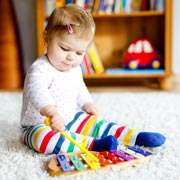 Even the youngest of children will take pleasure from shaking a homemade shaker, beating a box or drum, or jangling a tambourine. Such things are great starting points to introduce little ones to musical instruments. They can later progress to more advanced instruments like ocarinas, recorders, keyboards, guitars and so on.
Even the youngest of children will take pleasure from shaking a homemade shaker, beating a box or drum, or jangling a tambourine. Such things are great starting points to introduce little ones to musical instruments. They can later progress to more advanced instruments like ocarinas, recorders, keyboards, guitars and so on.
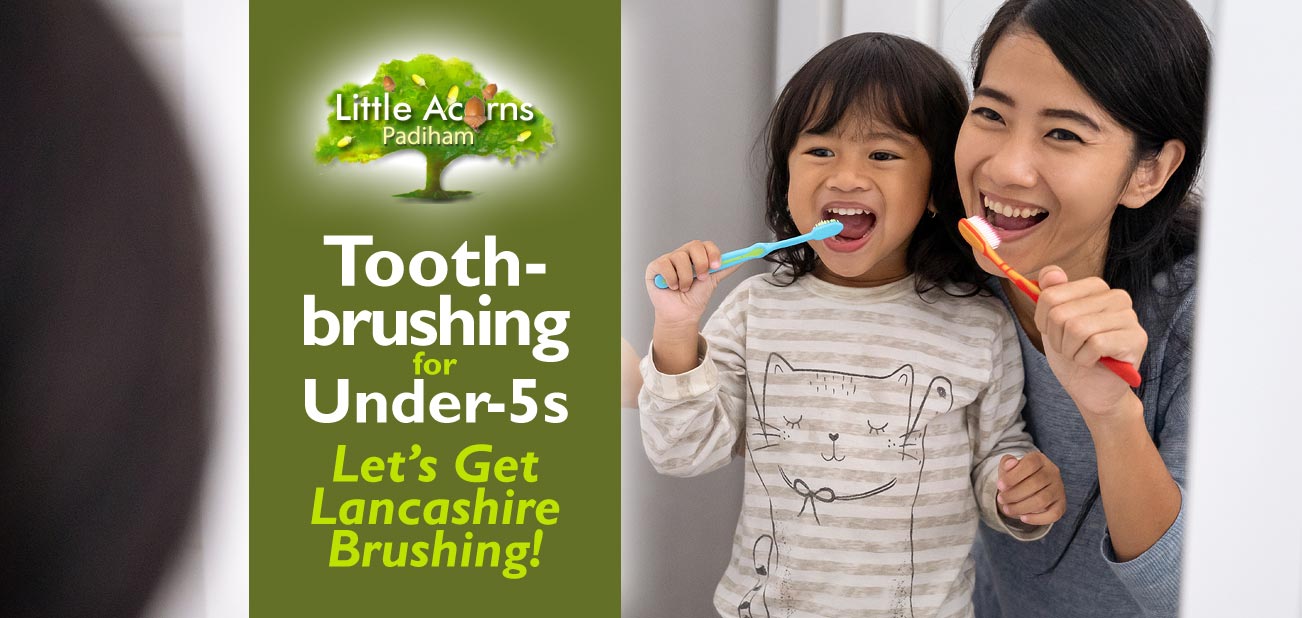
 Today we bring you a guide to toothbrushing for under-fives, inspired by children at Little Acorns Nursery taking part in Lancashire’s Let’s Get Lancashire Brushing campaign. An initiative of Lancashire County Council Public Health, the programme is designed to educate and encourage young children, including toddlers, to brush teeth for 2 minutes twice a day using age-appropriate toothpaste. What’s more, their message is that it’s never too young to begin and can even start before the first tooth has surfaced. At Little Acorns Nursery, the programme is supervised by staff and is intended to take place in tandem with toothbrushing at home — it does not replace it. Nursery staff guide children to establish a positive and proactive routine around toothbrushing, to foster good habits around oral hygiene, and thereby minimise tooth decay and problems associated with it.
Today we bring you a guide to toothbrushing for under-fives, inspired by children at Little Acorns Nursery taking part in Lancashire’s Let’s Get Lancashire Brushing campaign. An initiative of Lancashire County Council Public Health, the programme is designed to educate and encourage young children, including toddlers, to brush teeth for 2 minutes twice a day using age-appropriate toothpaste. What’s more, their message is that it’s never too young to begin and can even start before the first tooth has surfaced. At Little Acorns Nursery, the programme is supervised by staff and is intended to take place in tandem with toothbrushing at home — it does not replace it. Nursery staff guide children to establish a positive and proactive routine around toothbrushing, to foster good habits around oral hygiene, and thereby minimise tooth decay and problems associated with it.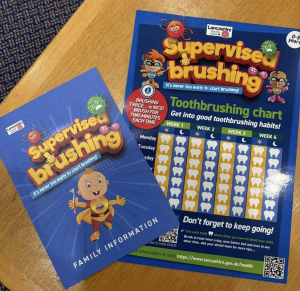
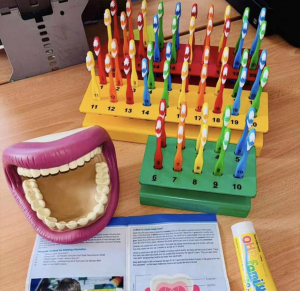
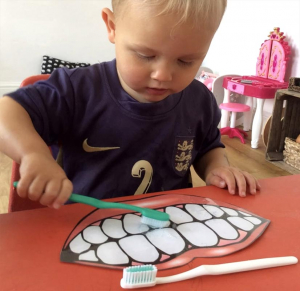
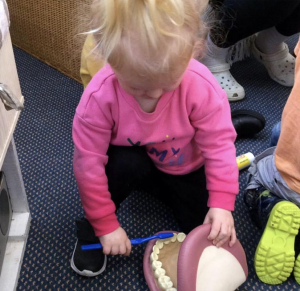

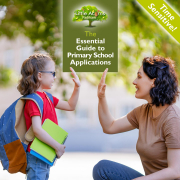
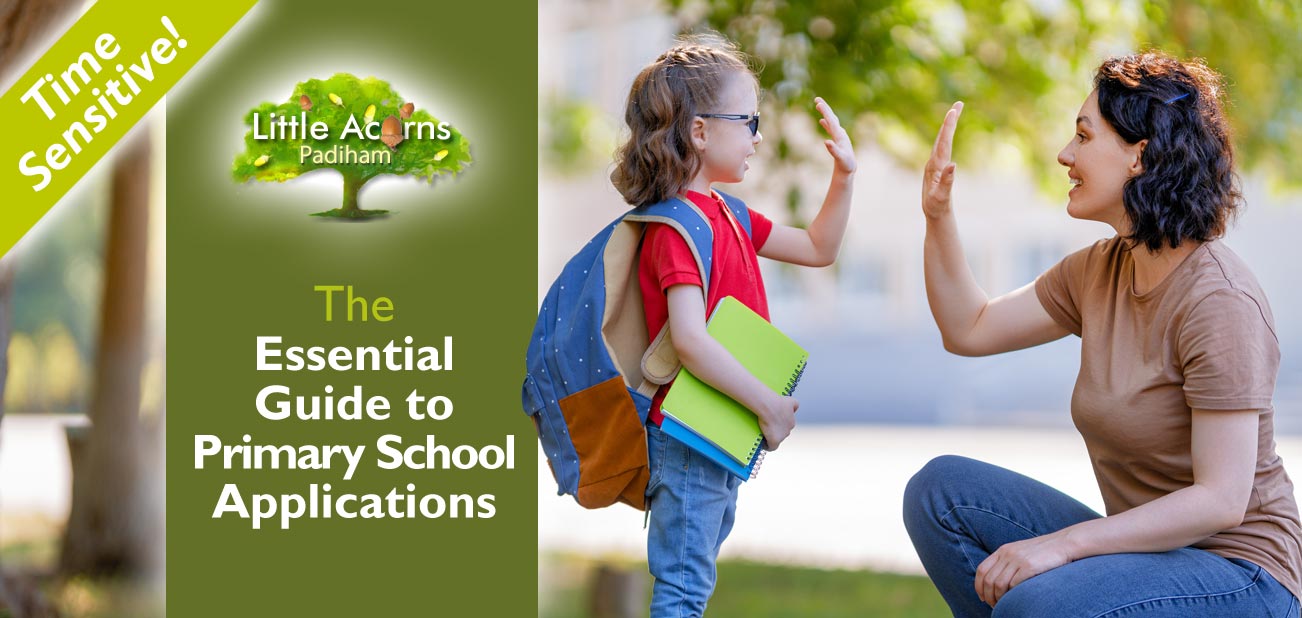
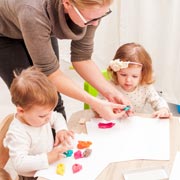 Primary school applications need to be submitted while the child is three or, at the very latest, has very recently had their fourth birthday. Because applications received on time are processed first, failure to apply by the due date means a child is less likely to receive an offer for their preferred school — places may no longer be available that late in the day.
Primary school applications need to be submitted while the child is three or, at the very latest, has very recently had their fourth birthday. Because applications received on time are processed first, failure to apply by the due date means a child is less likely to receive an offer for their preferred school — places may no longer be available that late in the day. Choosing a primary school for a child is an important step for any family. Somewhere conveniently close makes sense — and indeed is one of the most important criteria for offers, as we’ll see later. After all, you don’t want to be late dropping off or picking up your child because you’re stuck in a traffic jam miles away. Somewhere local will also mean your child has friends who are conveniently close by, which is another good thing. And, of course, if your child’s sibling already attends, then that school would usually be a natural first choice, assuming you’re happy with it of course.
Choosing a primary school for a child is an important step for any family. Somewhere conveniently close makes sense — and indeed is one of the most important criteria for offers, as we’ll see later. After all, you don’t want to be late dropping off or picking up your child because you’re stuck in a traffic jam miles away. Somewhere local will also mean your child has friends who are conveniently close by, which is another good thing. And, of course, if your child’s sibling already attends, then that school would usually be a natural first choice, assuming you’re happy with it of course. While the eligibility criteria for school places are not identical for all locations, there are several factors that are fairly standard. For example, schools closest to a child and those where a sibling already attends are usually favoured. Children may also be more likely to be accepted at a school where a parent has worked for 2 or more years. Church/faith schools are often also more likely to accept children who share the same faith.
While the eligibility criteria for school places are not identical for all locations, there are several factors that are fairly standard. For example, schools closest to a child and those where a sibling already attends are usually favoured. Children may also be more likely to be accepted at a school where a parent has worked for 2 or more years. Church/faith schools are often also more likely to accept children who share the same faith.  Primary school offers are first sent, by email, to those who applied on time and included a valid email address on their forms. Offers to such families are released on the morning of the 16th of April or the next working day if that happens to fall on a weekend or public holiday. Others who supplied an email address on their application, but who applied late in respect of the 15 January deadline, will usually receive offers via email the same day, although later on. Others, without an email address specified on applications, will receive offers via Second Class post, so are likely to see offers later than the 16th of April. Some local authorities, however, allow people to log onto a portal to view offers from that date. Note that those applying ‘in-year’ receive offers on different dates to the standard ones specified above.
Primary school offers are first sent, by email, to those who applied on time and included a valid email address on their forms. Offers to such families are released on the morning of the 16th of April or the next working day if that happens to fall on a weekend or public holiday. Others who supplied an email address on their application, but who applied late in respect of the 15 January deadline, will usually receive offers via email the same day, although later on. Others, without an email address specified on applications, will receive offers via Second Class post, so are likely to see offers later than the 16th of April. Some local authorities, however, allow people to log onto a portal to view offers from that date. Note that those applying ‘in-year’ receive offers on different dates to the standard ones specified above.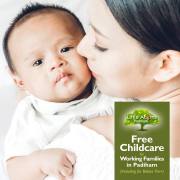
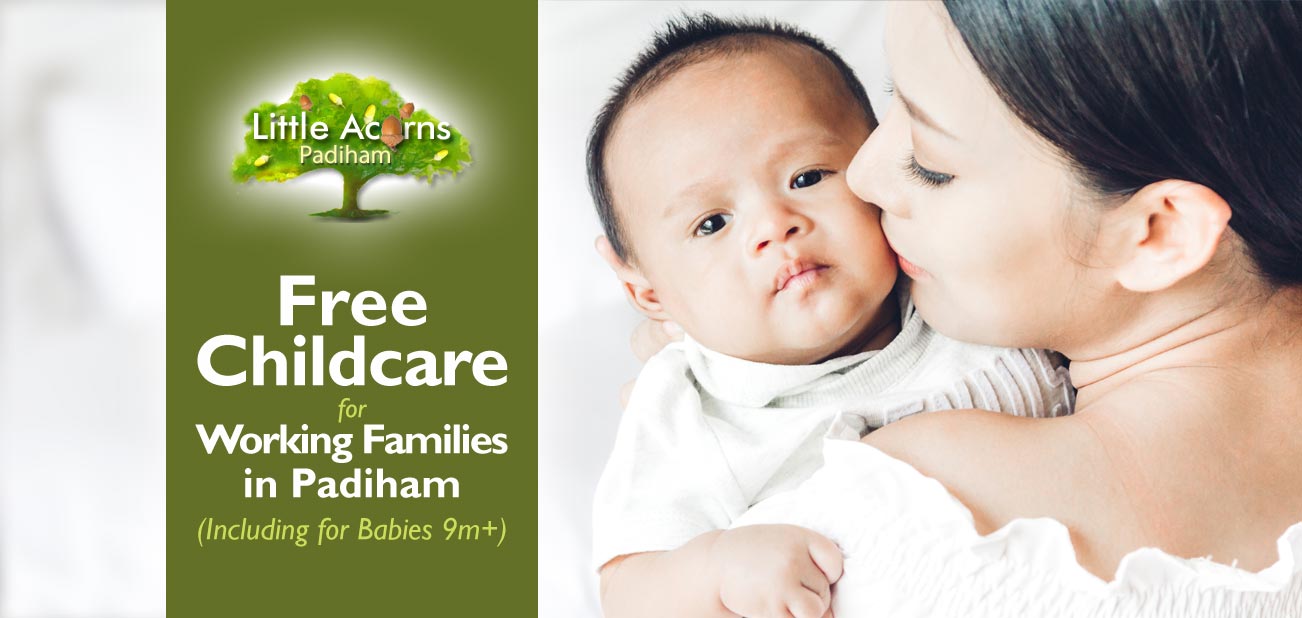
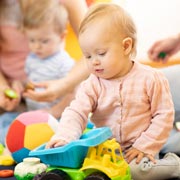 Today, we remind Padiham families that Little Acorns Nursery supports the new — free — childcare scheme for eligible children including babies as young as just 9 months of age. Although it’s available only to eligible working families, the bar to entry is fairly low. The childcare funding is therefore attainable for many families. This free childcare is not just limited to babies either and, what’s more, it’s due to become even more generous from September 2025. In our guide below we’ll outline who is eligible, how much childcare funding they can access, how many childcare hours that equates to, and what the eligibility criteria are. If you’re the parent of a baby, toddler, or child up to three years old, this is for you.
Today, we remind Padiham families that Little Acorns Nursery supports the new — free — childcare scheme for eligible children including babies as young as just 9 months of age. Although it’s available only to eligible working families, the bar to entry is fairly low. The childcare funding is therefore attainable for many families. This free childcare is not just limited to babies either and, what’s more, it’s due to become even more generous from September 2025. In our guide below we’ll outline who is eligible, how much childcare funding they can access, how many childcare hours that equates to, and what the eligibility criteria are. If you’re the parent of a baby, toddler, or child up to three years old, this is for you. For those working families who are eligible, the scheme provides 570 hours per year of free childcare to children aged from 9 months to 3 years. This is normally taken as 15 hours per week for 38 weeks, usually aligning with the standard educational term-time weeks for school timetables. That said, it may be possible to stretch the hours over more weeks of the year if your childcare provider is able to accommodate such flexibility.
For those working families who are eligible, the scheme provides 570 hours per year of free childcare to children aged from 9 months to 3 years. This is normally taken as 15 hours per week for 38 weeks, usually aligning with the standard educational term-time weeks for school timetables. That said, it may be possible to stretch the hours over more weeks of the year if your childcare provider is able to accommodate such flexibility. We’ll try to simplify the eligibility criteria for you. Whether it’s for a baby aged 9 months, a toddler of 1 or 2, or a child aged 3 or 4, there are essentially four main criteria for this specific type of childcare funding:
We’ll try to simplify the eligibility criteria for you. Whether it’s for a baby aged 9 months, a toddler of 1 or 2, or a child aged 3 or 4, there are essentially four main criteria for this specific type of childcare funding: Well, it’s good news. It’s already the case that all 3 and 4-year-olds living in England are eligible to receive 570 hours (15 per week) of free childcare anyway. That’s available under what’s known as ‘Universal Entitlement’, a Government childcare funding scheme that’s been around for some time. What’s more, those working families that are eligible for the ‘new’ free childcare for children aged 9 months to 3 years are also likely to be eligible for a top-up of their child’s Universal Entitlement once they reach the ages of 3 and 4. In those cases, they’ll be entitled to 30 hours per week over 38 weeks (or however the 1140 free hours are spread out). That’s because the eligibility criteria are the same (see section above).
Well, it’s good news. It’s already the case that all 3 and 4-year-olds living in England are eligible to receive 570 hours (15 per week) of free childcare anyway. That’s available under what’s known as ‘Universal Entitlement’, a Government childcare funding scheme that’s been around for some time. What’s more, those working families that are eligible for the ‘new’ free childcare for children aged 9 months to 3 years are also likely to be eligible for a top-up of their child’s Universal Entitlement once they reach the ages of 3 and 4. In those cases, they’ll be entitled to 30 hours per week over 38 weeks (or however the 1140 free hours are spread out). That’s because the eligibility criteria are the same (see section above).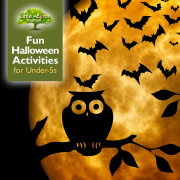
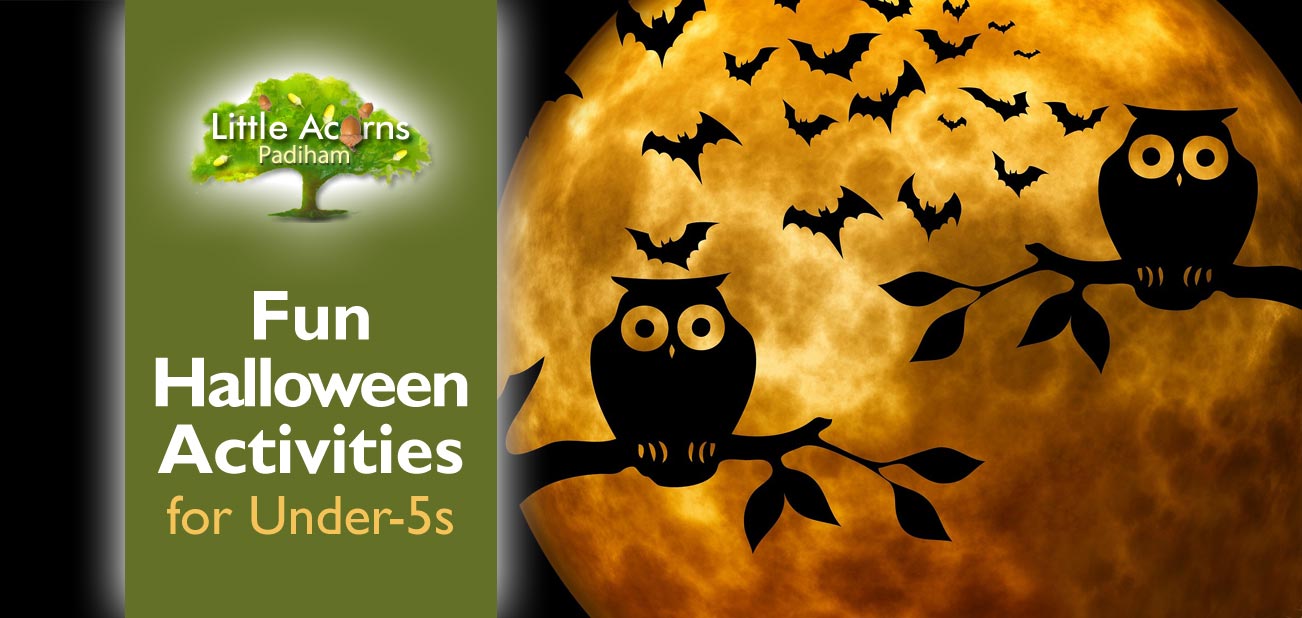
 Let’s get ready for some fun Halloween activities for our under-5s — as well as for older children. Children of all ages are naturally drawn to the unique imagery, fun activities, and spookiness of Halloween.
Let’s get ready for some fun Halloween activities for our under-5s — as well as for older children. Children of all ages are naturally drawn to the unique imagery, fun activities, and spookiness of Halloween. A simple but fun activity for children in the run-up to Halloween is to pick pumpkins. Whether it’s simply a case of visiting a local garden centre or store to choose a pumpkin from a themed display, or visiting a local farm where children can search for a favourite pumpkin in fields laden with them, it’s great fun for little ones. Children are sure to enjoy choosing from the usually huge array of different sizes and shapes.
A simple but fun activity for children in the run-up to Halloween is to pick pumpkins. Whether it’s simply a case of visiting a local garden centre or store to choose a pumpkin from a themed display, or visiting a local farm where children can search for a favourite pumpkin in fields laden with them, it’s great fun for little ones. Children are sure to enjoy choosing from the usually huge array of different sizes and shapes.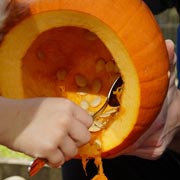 Once your child has a pumpkin or other gourd, it’s almost imperative that it’s carved (by a supervising adult) and made into what Americans call a Jack-O’-Lantern. Many families will be totally familiar with these, typically being a hollowed-out pumpkin with eyes, a nose, and a mouth — or indeed other kinds of design as indicated in the accompanying image. Children can be involved in the design, painting with paint if going that route, and perhaps spooning out the inside flesh (keep for later; see the food and drink section below).
Once your child has a pumpkin or other gourd, it’s almost imperative that it’s carved (by a supervising adult) and made into what Americans call a Jack-O’-Lantern. Many families will be totally familiar with these, typically being a hollowed-out pumpkin with eyes, a nose, and a mouth — or indeed other kinds of design as indicated in the accompanying image. Children can be involved in the design, painting with paint if going that route, and perhaps spooning out the inside flesh (keep for later; see the food and drink section below).  However, any cutting will be too dangerous for little ones, so should be done only by an adult. It’s the same with the next step, which is lighting a candle or tea light to put inside once it’s dark. The pumpkin lanterns can then be placed outdoors for neighbours and friends to see and the children themselves will find these fascinating once night falls. They make for a great atmosphere and a bit of spookiness!
However, any cutting will be too dangerous for little ones, so should be done only by an adult. It’s the same with the next step, which is lighting a candle or tea light to put inside once it’s dark. The pumpkin lanterns can then be placed outdoors for neighbours and friends to see and the children themselves will find these fascinating once night falls. They make for a great atmosphere and a bit of spookiness! Children will also love spreading the Halloween theme around the house. This activity is made easy by purchasing inexpensive Halloween decorations that are available commercially in places like supermarkets each October. Whether it’s cotton spider webs, complete with pretend black spiders, that can be strung from picture frames, furniture or across ornaments, little LED strung lanterns that have a Halloween theme, or glow-in-the-dark plastic skulls, ghosts, or pumpkins, there are a myriad of fun decorations that children can use to theme bedrooms and living rooms. It all makes for a very spooky and fun atmosphere come Halloween.
Children will also love spreading the Halloween theme around the house. This activity is made easy by purchasing inexpensive Halloween decorations that are available commercially in places like supermarkets each October. Whether it’s cotton spider webs, complete with pretend black spiders, that can be strung from picture frames, furniture or across ornaments, little LED strung lanterns that have a Halloween theme, or glow-in-the-dark plastic skulls, ghosts, or pumpkins, there are a myriad of fun decorations that children can use to theme bedrooms and living rooms. It all makes for a very spooky and fun atmosphere come Halloween.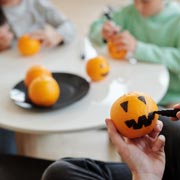 It’s also possible for children and families to create their own Halloween-themed decorations, with a bit of imagination. Stretched-out cotton wool can mimic spiders’ webs, for example. Children can get creative and make cut-out (with adult help for the youngest) spiders, bats, and suchlike to put on and around such webs. Children can paint oranges with faces to represent mini pumpkin Jack-O’-Lanterns, or even string these together into themed garlands. They can get involved in making Halloween-themed decorated biscuits or cookies too, which we’ll come to next.
It’s also possible for children and families to create their own Halloween-themed decorations, with a bit of imagination. Stretched-out cotton wool can mimic spiders’ webs, for example. Children can get creative and make cut-out (with adult help for the youngest) spiders, bats, and suchlike to put on and around such webs. Children can paint oranges with faces to represent mini pumpkin Jack-O’-Lanterns, or even string these together into themed garlands. They can get involved in making Halloween-themed decorated biscuits or cookies too, which we’ll come to next. Parents/carers can help children make, or simply decorate, Halloween-themed biscuits. See the photo to get an idea of how they can be baked and painted to represent wonderful ghosts, spider webs, bats and more. These are attractive as well as being great fun for little ones to get involved with, under supervision. What’s more, they can be eaten and are often delicious!
Parents/carers can help children make, or simply decorate, Halloween-themed biscuits. See the photo to get an idea of how they can be baked and painted to represent wonderful ghosts, spider webs, bats and more. These are attractive as well as being great fun for little ones to get involved with, under supervision. What’s more, they can be eaten and are often delicious! One of children’s favourite Halloween activities is dressing up. Children, including those under five, love to put on themed costumes to become a ghost, witch, wizard, spider, skeleton or character from a film like Harry Potter. Even better is when their friends, neighbours or siblings join in and they can each compare outfits and get into character. “Boo!” they may shout, or perhaps they’ll cast pretend spells and ‘fly’ on makeshift broomsticks. It’s all great fun!
One of children’s favourite Halloween activities is dressing up. Children, including those under five, love to put on themed costumes to become a ghost, witch, wizard, spider, skeleton or character from a film like Harry Potter. Even better is when their friends, neighbours or siblings join in and they can each compare outfits and get into character. “Boo!” they may shout, or perhaps they’ll cast pretend spells and ‘fly’ on makeshift broomsticks. It’s all great fun! Outfits can be purchased, often inexpensively, online or through supermarkets when Halloween is approaching. Alternatively, children can get creative and make their own. A white sheet with suitable holes cut for eyes is perfect for a ghost outfit. Black material or capes are a great start for a witch or wizard outfit and pointy hats can be made, perhaps with a bit of help from adults, from cardboard and then painted black or covered with black tissue paper. Any number of different outfits can be made, in fact, and all that’s needed is imagination, the right materials, and a bit of time. Children’s creativity will be stimulated and they’ll get a great feeling of accomplishment once the fancy dress outfits are complete.
Outfits can be purchased, often inexpensively, online or through supermarkets when Halloween is approaching. Alternatively, children can get creative and make their own. A white sheet with suitable holes cut for eyes is perfect for a ghost outfit. Black material or capes are a great start for a witch or wizard outfit and pointy hats can be made, perhaps with a bit of help from adults, from cardboard and then painted black or covered with black tissue paper. Any number of different outfits can be made, in fact, and all that’s needed is imagination, the right materials, and a bit of time. Children’s creativity will be stimulated and they’ll get a great feeling of accomplishment once the fancy dress outfits are complete. All of the above activities can be combined when children throw a Halloween party for friends and/or neighbours. It’s all the more fun when other children come along in their own themed outfits. Together, children can play games, get into character, listen to spooky music, eat homemade Halloween-themed food and drinks, and have a wonderful time. Not only are parties fun but they also deepen bonds and help little children strengthen social skills. It’s all hugely creative too.
All of the above activities can be combined when children throw a Halloween party for friends and/or neighbours. It’s all the more fun when other children come along in their own themed outfits. Together, children can play games, get into character, listen to spooky music, eat homemade Halloween-themed food and drinks, and have a wonderful time. Not only are parties fun but they also deepen bonds and help little children strengthen social skills. It’s all hugely creative too. Part of the party could involve, perhaps, a ‘trick or treat’ session around the neighbourhood — under close supervision of one or more adults, of course. Children get great glee from this tradition, which often results in the bonus of lots of goodies to take home and sweets to eat (… and it’s only once a year) or perhaps a light-hearted, though often hilarious ‘scare’, should a neighbour decide to go with the ‘trick’ option.
Part of the party could involve, perhaps, a ‘trick or treat’ session around the neighbourhood — under close supervision of one or more adults, of course. Children get great glee from this tradition, which often results in the bonus of lots of goodies to take home and sweets to eat (… and it’s only once a year) or perhaps a light-hearted, though often hilarious ‘scare’, should a neighbour decide to go with the ‘trick’ option.